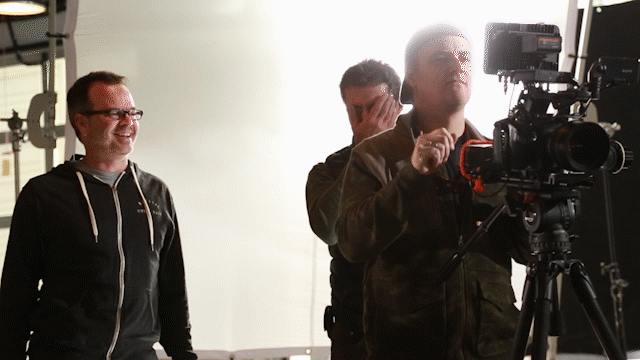Keeping a shoot day on schedule is all about the pre-production. Taking the time to consider all of the necessary items for each shot and agreeing on priorities is essential. Here are a few tips that we use at One Floor Up to create an effective schedule (and stick to it).
1. Creating a Detailed Schedule
Depending on the project, preparing a shot list and breakdown sheet can either calm your nerves or set in some pretty intense anxiety. It’s common place to have an over-scheduled day and a very tight schedule. But having a detailed, thought out schedule can make or break your shoot day (and budget for that matter).
Start by breaking your script up into an organized shot list including: Location, Shot Description, Framing, Action, Dialogue, Talent, Props. Here is a good template to start from. Then assign a shoot order to the list to be as efficient as possible.
It’s important to develop a shooting schedule that reduces as much movement as possible between setups and scenes. If you’re shooting multiple rooms in a house – plan the shoot so that each room you shoot is adjacent (or as close as possible) to the previous room you just shot in.
Once you’ve developed a shoot order that makes sense based on minimizing movement, go back and review for crew and talent. Who is needed for each shot? Who is working the hardest and when should they have a break?
2. The Importance of a Production Meeting
Now that you’ve developed a strategy for getting through the day, it’s essential that everyone talk through it together.
The director, AD and DP need input on the schedule. Discuss each setup, who’s responsible for what; how much time it needs to take; where are the potential trouble spots?
Take detailed notes and present an updated timetable to the team after the meeting. This will be your ‘official’ shooting schedule. Listening to your crew and taking their input into consideration is vital for buy-in day of the shoot. If people feel like they contributed to the schedule, they’re more committed to sticking to it.
Holding this meeting has a secondary benefit, you’re giving everyone a chance to learn about each other’s roles and responsibilities for the day. When your crew know each other’s responsibilities, they’ll be able to help each other keep up with the demands of such a tight schedule.
3. Update Your Schedule
A good video production schedule has start and end times for each shot. It’s great to have things printed out in advance for people. But day of, have a digital version on hand. If you’re running behind (or somehow ahead) update the schedule as you go and figure out how that effects the rest of the day. Maybe there’s a shot you can drop later in the day to make up the time. Maybe some shots are less important to others and you can reduce the time your crew has to capture them.


